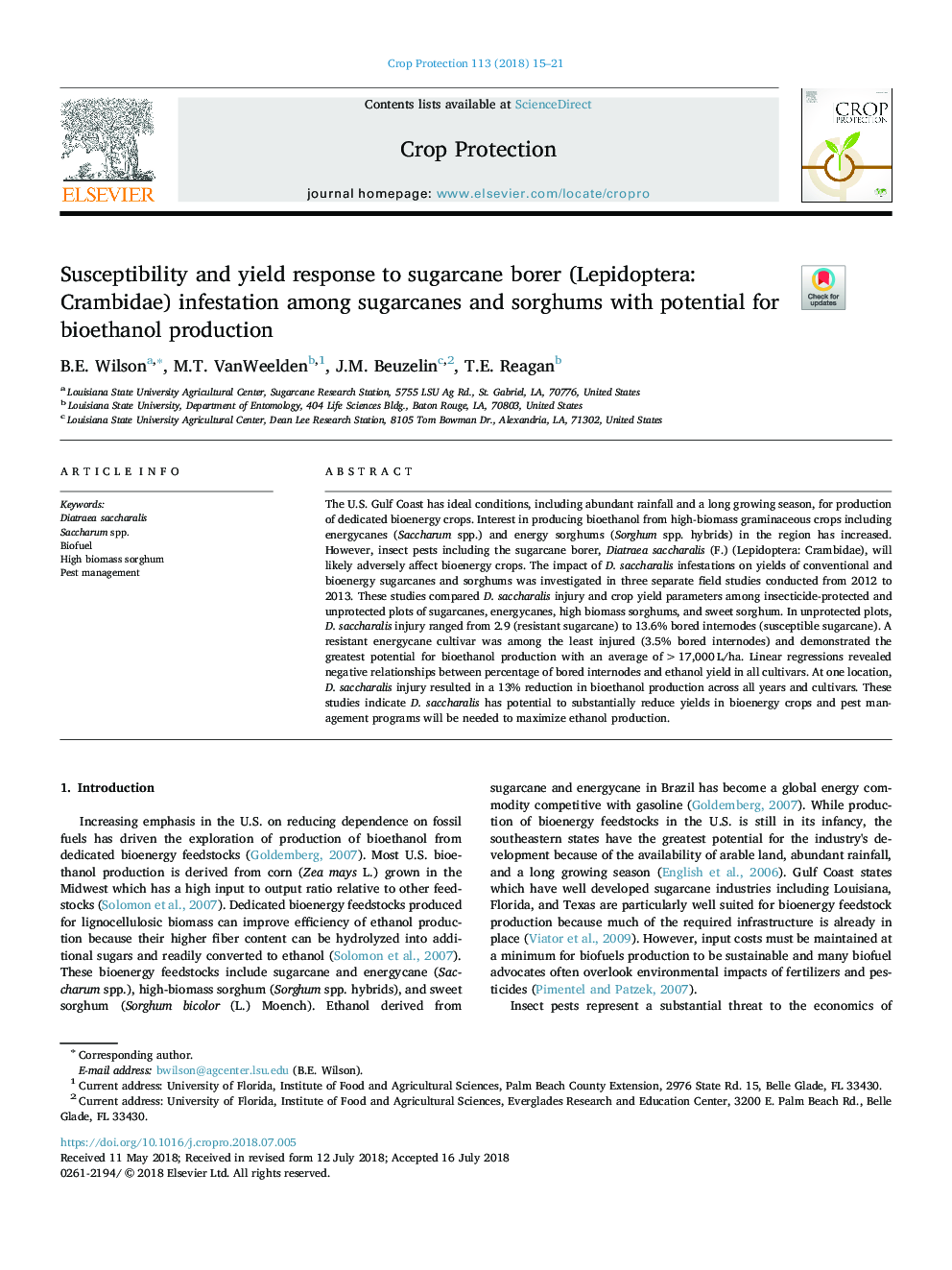| Article ID | Journal | Published Year | Pages | File Type |
|---|---|---|---|---|
| 8877869 | Crop Protection | 2018 | 7 Pages |
Abstract
The U.S. Gulf Coast has ideal conditions, including abundant rainfall and a long growing season, for production of dedicated bioenergy crops. Interest in producing bioethanol from high-biomass graminaceous crops including energycanes (Saccharum spp.) and energy sorghums (Sorghum spp. hybrids) in the region has increased. However, insect pests including the sugarcane borer, Diatraea saccharalis (F.) (Lepidoptera: Crambidae), will likely adversely affect bioenergy crops. The impact of D. saccharalis infestations on yields of conventional and bioenergy sugarcanes and sorghums was investigated in three separate field studies conducted from 2012 to 2013. These studies compared D. saccharalis injury and crop yield parameters among insecticide-protected and unprotected plots of sugarcanes, energycanes, high biomass sorghums, and sweet sorghum. In unprotected plots, D. saccharalis injury ranged from 2.9 (resistant sugarcane) to 13.6% bored internodes (susceptible sugarcane). A resistant energycane cultivar was among the least injured (3.5% bored internodes) and demonstrated the greatest potential for bioethanol production with an average of >17,000â¯L/ha. Linear regressions revealed negative relationships between percentage of bored internodes and ethanol yield in all cultivars. At one location, D. saccharalis injury resulted in a 13% reduction in bioethanol production across all years and cultivars. These studies indicate D. saccharalis has potential to substantially reduce yields in bioenergy crops and pest management programs will be needed to maximize ethanol production.
Related Topics
Life Sciences
Agricultural and Biological Sciences
Agronomy and Crop Science
Authors
B.E. Wilson, M.T. VanWeelden, J.M. Beuzelin, T.E. Reagan,
